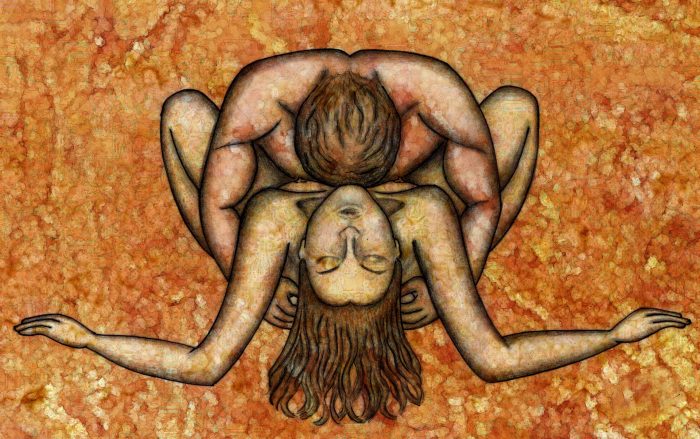>> And then another interesting perspective: Mindful Masturbation: 5 Tips to Create a Self-Pleasure Practice.
~
Per my therapist’s suggestion, I signed up with a popular local yoga and meditation studio for a tantra class a few weeks ago.
My therapist wasn’t super familiar with tantra, but she’d heard it could help to recover intimacy wounds. And that is what we thought I needed after separating from my partner of 15 years.
Approaching a Western tantra class from the context of being a practicing Buddhist for over 20 years gave me a healthy dose of skeptical curiosity, you could say. The tantra I knew wasn’t the same thing as the tantra my therapist was talking about.
My tantra? It’s meditation for an enlightened being. No metaphors there—just sitting on the cushion and meditating. The tantra the rest of the Western world was doing? No idea. Time to find out, I thought. You know, for healing.
But learning Western tantra during a pandemic, it seems, is not so easy. Many of the popular workshops in the area are shut down. A few had moved online but had limited reviews. Others, I felt, were hugely overpriced, given the fact that they were a series of recorded videos.
I looked into Facebook groups and signed on to a generic one. I also found another one that seemed to be discussing problems with the current practice of tantra by Westerners (it’s called “Tantra and Trauma”—interesting, I thought). I signed up for an inexpensive web series and one Zoom class. In some cases, what I learned was a little shocking; in other cases, it was just weird. Could the practice of Western Tantra—or Neotantra, as some call it—actually heal a person?
From the “Tantra and Trauma” group, I quickly learned of groups operating “tantra classes” that sounded a lot more like sex cults. And people were getting really hurt by them. There was manipulation, coerced adultery, and narcissistic abuse, all clothed in the guise of enlightening oneself through sex.
The other Facebook group simply seemed to be a bunch of horny dudes posting about getting it on. And, for some reason, the women defended them when anyone questioned whether the discussion had anything to do with tantra. Shrug.
In the inexpensive web series and Zoom class, similar concepts were repeated—it was just different teachers. I learned about Trauma Release Exercises (TRE)—they were specifically shaking. TRE has shown to be effective for overcoming trauma, but what does it have to do with tantra?
Both classes talked about eye-gazing to increase intimacy with your partner. Okay, I’ll allow that staring into your partner’s eyes can deepen a connection, but tantra? Both classes prescribed exercises for different “sexy” movements—a pelvic tilt, a sensual dance. Mmmmkay?
And finally, both classes gave a long monologue on how most religions keep you caged and controlled by telling you not to have sex, but tantra was different. And, apparently, that difference will liberate you because you can’t ignore your root chakra and expect to become enlightened. (Or something like that.)
Can we address the last thing? For one, it’s putting a load of Western ideas about celibacy onto a non-Western practice. Buddhism, the religion I practice, is aimed at getting us out of cyclic existence. And what is one of the but things that keep us trapped here? Desire.
Celibacy in Buddhism is not about controlling people; it’s about getting a handle on what keeps us chasing after suffering. And there is a long history of both monks and non-celibate laypersons achieving the path to Buddahood. This thing we Westerners have about sex and “the church” preventing us from having it? It has nothing to do with celibate traditions in the East.
Could we Westerners please stop warping everything into our basic worldview—for once?
The Western idea of tantra—the sex and meditation thing—is a Western construct that mish-mashes trauma recovery with varying degrees of intimacy work for the purpose of healing. It then wraps it in the new-age shell of Neotantra, which has existed for about 50 years. And largely, it does not meet its lofty goals.
To sum up: I’m going to stick with my traditional meditation—the one that’s existed for 2,600 years and, you know, actually leads to enlightenment.











Read 15 comments and reply